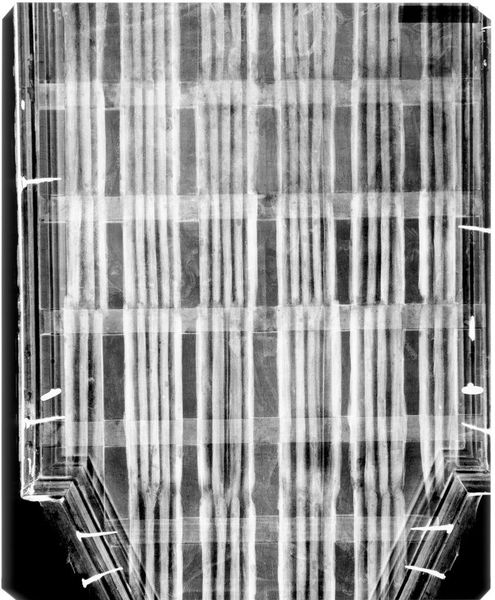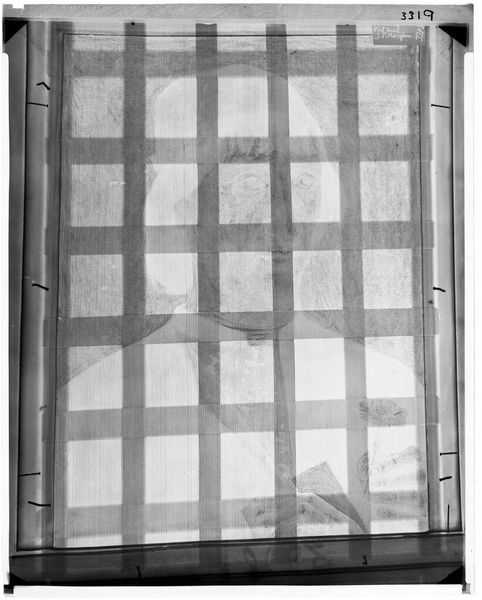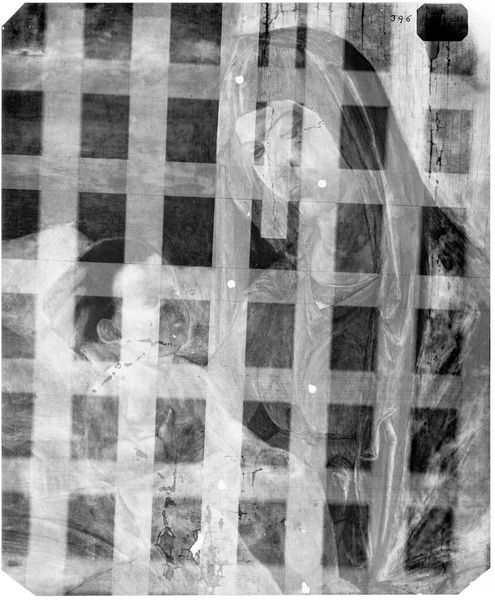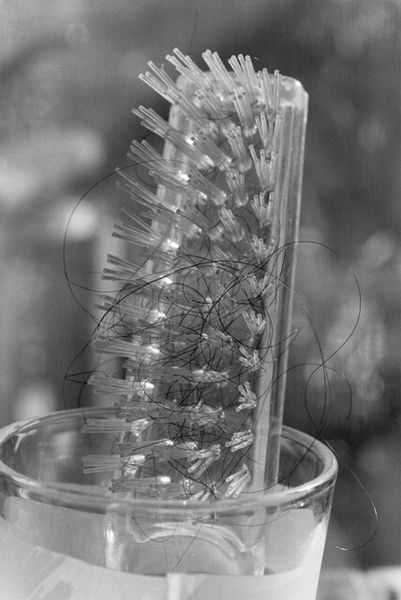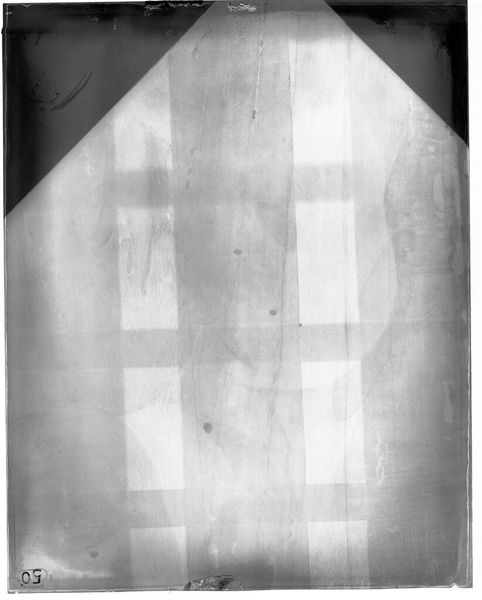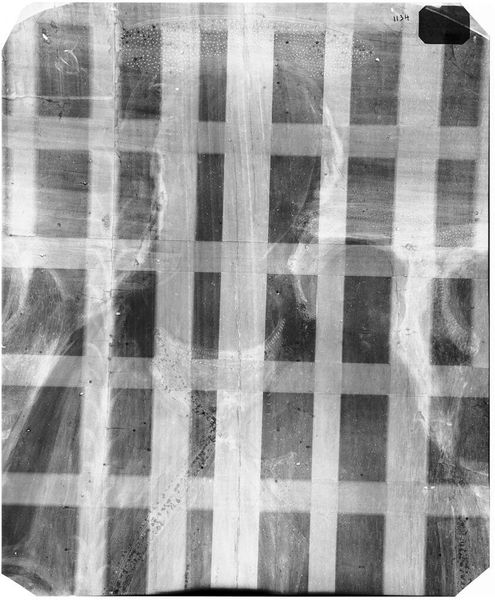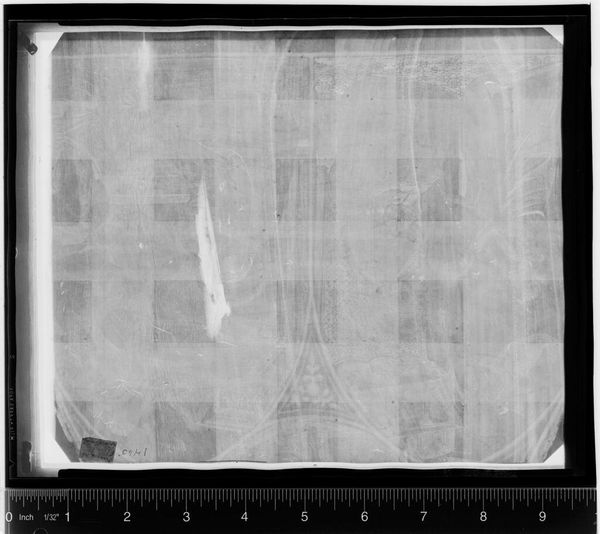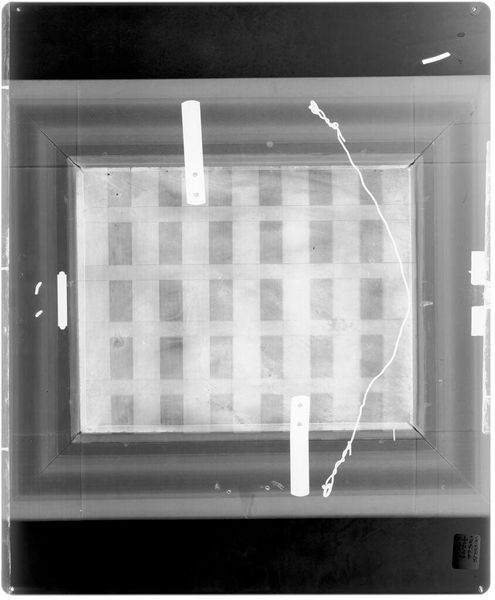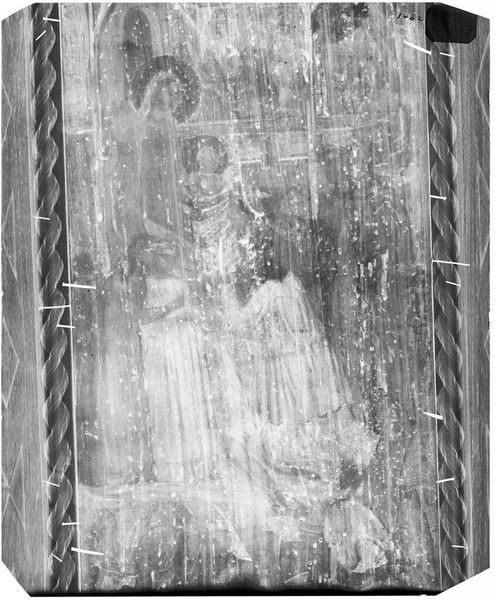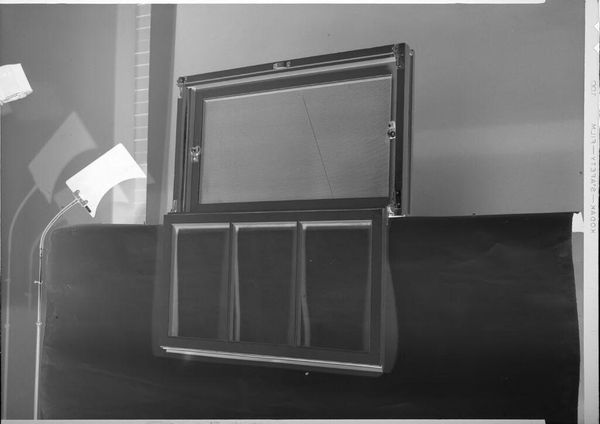
Copyright: Public domain
Curator: Well, this is certainly intriguing. I'm immediately struck by the contrast – the stark, industrial shapes against the soft, diffused light. Editor: This is "Light-Space Modulator," a photograph created around 1930 by László Moholy-Nagy. It’s part of the collection at the Busch-Reisinger Museum. He experimented quite a lot with photography and its relationship to industry and movement, right? Curator: Absolutely. What’s captivating here is the material exploration – we see metal, glass, possibly even some early plastics, all arranged to manipulate light. How accessible were these materials in 1930, though? Was this an embrace of readily available technology or a more bespoke construction? Editor: That’s a brilliant question. Moholy-Nagy was deeply involved with the Bauhaus, so thinking about it within that historical and cultural context is important. He wanted to break down hierarchies, and part of that involved elevating industrial design and craftsmanship. These were everyday materials, yes, but he transformed them through artistic vision, accessible, but transformed into high art. Curator: The shadows it creates are quite deliberate; almost painterly. I’m keen to consider what kinds of labor were needed for such a meticulous arrangement, but even beyond the labour, what are the mechanisms in use? How did they operate, and what skills were involved in creating this kinetic piece? Editor: Knowing Moholy-Nagy, it was about challenging artistic convention. He was pushing photography beyond documentation towards something more… sculptural and performative. Think about the Bauhaus exhibitions where art and technology were shown side-by-side. His work provokes conversation regarding the role of art in the Machine Age and highlights the institution that he comes from. Curator: It really feels like he was trying to capture movement and dynamism within a static image. This modulation is like an examination into modern production, labor, and innovation through mechanical forms. Editor: I see it also as an important historical object, showing a particular social moment that reevaluated what art was supposed to be within a changing culture. Curator: This piece makes me think about accessibility of production – not only is he making industrial tech art, he’s democratizing artistic representation through photographic manipulation, and that is amazing to consider. Editor: I agree. And placing the work in context of exhibitions reveals just how intentional these design philosophies are, demonstrating a broader social shift and political aim through modern design.
Comments
No comments
Be the first to comment and join the conversation on the ultimate creative platform.
